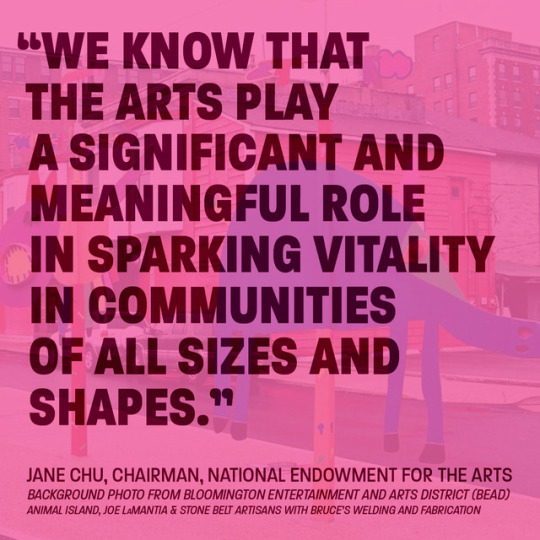This is the Tumblr home for the Indiana Arts Commission.
Don't wanna be here? Send us removal request.
Text
Five tips to making arts partnerships with elementary schools
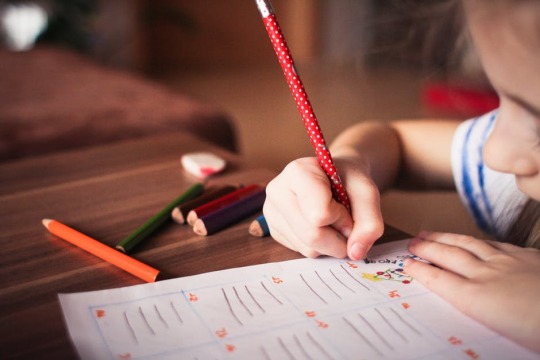
Our arts education grant program, Partnering Arts, Community and Education, (PACE), assists and enables elementary schools and artists and arts organizations to establish long-term, in-depth, and sustainable partnerships. For the past three years, six arts - school partnerships have participated in-depth arts integration residency programs during the school day for students in grades 1st through 5th.
Through this comprehensive process from planning, to student workshops, to teacher professional development and community field trips, these six arts - school PACE partnerships have learned a lot of lessons along the way.
During a pre-conference session during the 2017 Indiana Arts Homecoming, the PACE partners gathered to share ideas and challenges to this kind of arts – school partnership.
If you’re interested in more long-term art programming during the school day, here are some best practices from our PACE partners:
Talk to teachers first. Ask them what their goals are for the classroom, and explain the benefits of your art form and how you deliver your programming. You’ll likely find a lot of common ground. Early support from teachers is essential.
Meet, Meet, Meet. The more people you can get around the planning table the better. From teachers, to principals, to the custodial staff, a visiting artist will need everyone’s help navigating the eco-system of the school.
Think about the schedule (not just yours). There will be holidays, snow days, testing dates, and field trips all throughout the school’s calendar. Think ahead about how you can schedule regular visits to the school with consideration of these important dates. PACE partners suggest visits on Tuesdays through Thursdays as the least likely to have interruptions.
Keep communications open. Ongoing check-ins and meetings can help adjust programs to keep meeting the expectations of the teachers as the school year shifts and changes. As the teachers get to know your art form better, they will begin to have their own ideas how to integrate your work into their curriculum goals.
Students will come and go. Going into the program with flexibility is essential. Create plans that can be flexible with students who arrive mid-program. Consider strategies that can quickly catch new student up like pairing them with another student for extra help.
2 notes
·
View notes
Text
Collaboration of the Generations
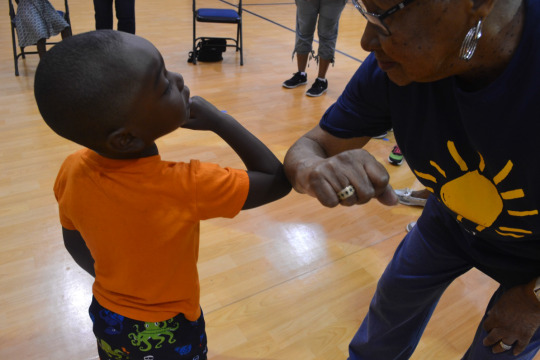
Collaboration of the Generations is a program from Arts for Learning that brings together children and elders through the natural medium of storytelling. Both groups work with a storyteller, then gather to have the elders tell their stories to the children. Children then work with the storyteller to practice retelling the elders’ stories.
At the end of the separate sessions with the teaching artist the students and the elders come together, normally at the senior center, and the students retell the elders’ stories. This culminating event definitely has the “ice cream social” vibe.
This program has many benefits; creative writing, critical thinking, public speaking, teamwork. But perhaps the most inspiring is empathy.
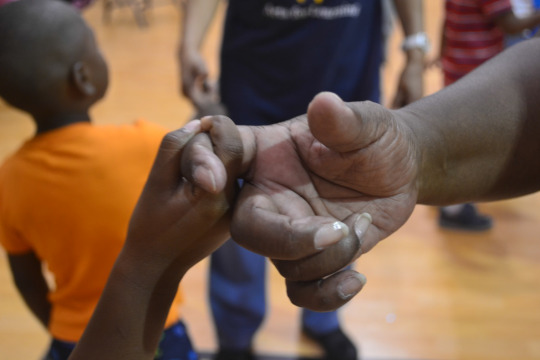
The little things matter the most.
Building Empathy
During one of the “end of program” storytelling gatherings a senior citizen who was non verbal was sitting alone in a corner. During the event a student approached her and sat with her while they ate ice cream together.
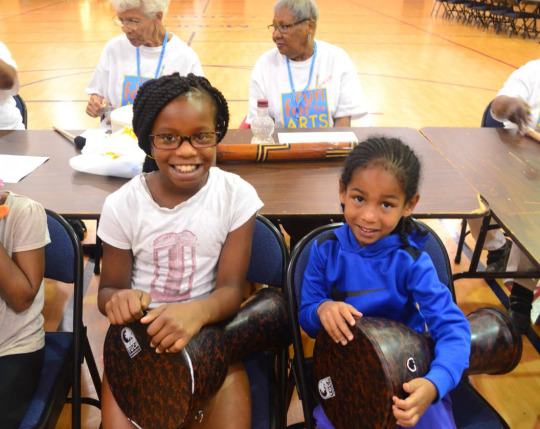
We want more, we want more.
Sustainable Learning
In Johnson County, students enjoyed the project so much that they asked to continue it even after the program had ended. And so after school hours, many of those student go over to the senior center and continue to listen to the stories of their new friends.
The Johnson County school was so inspired by the program’s ability to create dynamic bonds that they even started implementing the storytelling curricula between 6th and 8th graders.
This program has had so much success that Arts for Learning has expanded the art form used to include dance. Photos in this blog post represent this expansion and are representative of the 2017 collaboration between Mt. Carmel Church Senior Ministry and Community Academy. The teaching artist was Melli Hoppe.
1 note
·
View note
Text
“Multiple abilities” is the norm, not the exception.
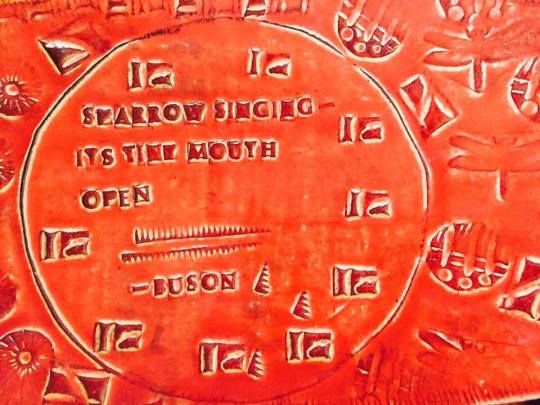
The world is not segregated into sections of people with disabilities and people without. In fact, statistics show that nearly 1 in 5 people have a disability in the United States. So how can we make inclusion not just a buzzword but a reality? Through the arts.
“The arts have a remarkable way of being naturally inclusive of varying abilities and provide multiple means of engaging learners.” – Gayle Holtman
youtube
Most of us have heard that the arts have the power to transform lives but unless you’ve witnessed it yourself that transformation may be difficult to fully understand. So last week we hopped on the phone with the Gayle Holtman the President and CEO of ArtMix, an Indianapolis-based arts organization committed to transforming the lives of people with disabilities through the creation of art, and she told us a story about a young man named Thomas.
Redefining Disability
Moving beyond the label
Thomas suffered a traumatic brain injury and was struggling to find himself again. He came to ArtMix, got involved with the Urban Artisans Program. ArtMix’s Urban Artisans program was created to help youth with disabilities transition from school to the workplace.
Through participating in the program Thomas regained his confidence and landed a job at a local grocery store. Recently, he’s earned even more responsibility and now trains new baggers at the store.
“Art is an opportunity to reframe identity.” – Gayle Holtman
ArtMix Goes To The White House
youtube
Selected from over 285 nominations, the Urban Artisans program was one of twelve awardees for the 2015 National Arts and Humanities Youth Program Awards. Staff member Linda Wisler and intern artist Meghan McNeal traveled to the Washington, D.C. to share the stage with First Lady Michelle Obama on November 17, 2015.
Click here to read the National Arts and Humanities Youth Program Awards Highlight on the Urban Artisans Program.
Feeling inspired?
There’s more where that came from, head over to the ArtMix website to read about the organization’s core programs:
Community Arts Classes
Urban Artisan
The Lolly Project
Artist in Residency Programs
ArtMix Gallery
CREATE – Team building through the arts
#artseducation#artsedweek#becauseofartsed#indiana#artmixindiana#whitehouse#inclusion#notjustabuzzword
0 notes
Text
Arts Ed-spiration for #artsedweek2017
As our friend Carrie Holbo over at the National Endowment for Arts put it, the arts matter because, “they are like a gift from one soul to another – whether it’s a joyful, simple gift like a child’s drawing, or a play or novel that makes you think and hurt and wish and feel, the arts help us understand ourselves and each other.” The gift arts education often presents are the skills needed down the road to land a dream job in any field.
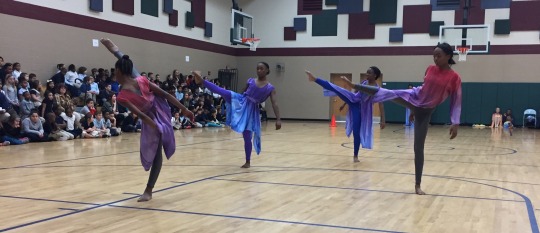
Photo courtesy of Arts for Learning, Pine Elementary School and South Shore Dance Company.
No seriously. According to Bloomberg job skills companies want but can’t get include:
Strategic thinking
Creative problem-solving
Leadership skills
Communication skills
For some people, the these skills are intuitive. But often these skills need a little coaxing. That’s where arts education becomes extremely valuable.
The Indiana Arts Commission utilizes arts integration in it’s new(ish-2014) arts education program Partnering Arts, Community, and Education (PACE). A key component to PACE is measuring student growth and helping to promote arts education’s impact by way of student achievement. If you’re a numbers person, take a look at the 2015-2016 Project Report. If you prefer the power of story we’ve got you covered below:
Strategic thinking
Sneaky Teaching McKinley Primary Center with the Robinson Community Learning Center Theatre Class South Bend
Working with 2nd, 3rd and 4th graders teaching artist Christy Burgess collaborates with the classroom teacher to integrate the arts into everyday lessons. One such example: students were learning about the weather and in order to make cumulonimbus clouds more memorable Christy had the students create their own newscaster skits. The key to engaging the students here was putting them in charge of the learning, letting them lead the way and develop their own theatre scripts using skills and techniques Christy had introduced earlier in the year. Jennifer (grant manager) cleverly refers to this method as “sneaky teaching” and says, “using the whole body to find the joy in learning” is really at the root of their PACE programming.
Creative problem solving
Creating Movement South Wayne Elementary School with the Fort Wayne Dance Collective Dance Class Fort Wayne
The students were really struggling to be in close proximity with each other and maintain good behavior. About half way into the school year as part of their PACE workshops the students read “Seven Blind Mice” together. As a follow up activity, teaching artist Allison Ballard wanted the student to dance the story with their bodies. She had the students get in to small groups and create one of the key story characters, an elephant, with their bodies. Next, Allison decided to kick it up a notch with quick movement across the room, and you would’ve thought magic was happening. All of a sudden all 30 kids were moving around the classroom, working together in one large group to create this elephant. They were engaged, interested, and not put off by being in a small space together.
Leadership
Breakthrough Moment Pine Elementary School with Arts for Learning Dance Class Michigan City
There was one boy in class who didn’t participate. He would watch and smile but didn’t want to do any activity himself then after the first performance he wanted to try. Now he’s a leader in class. The program created a safe environment for him to express himself and step outside his box.
– Melli Hoppe, Teaching Artist
Communication skills
Follow the Drinking Gourd Pine Elementary School with Arts for Learning Dance Class Michigan City
The kids were learning about the Underground Railroad in their 4th grade social studies class and teaching artist Melli Hoppe worked with the students to choreograph a dance to go along with the lesson. The dance illustrating the folk song “Follow the Drinking Gourd” and the concepts of coded messages by song during the times of the Underground Railroad. The students choreographed the dance and praticed over and over during their time with Melli, improving both their dancing skills as well as their knowledge of U.S. history. The students were so excited by what they learned and proud of the dance they created with each other that during the school’s family night they taught their parents the dance!
0 notes
Text
Arts wanna be where the people are
Cue The Little Mermaid...
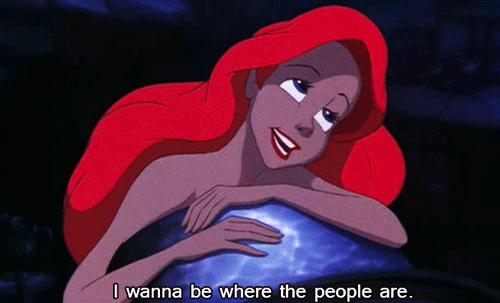
but really this is where Creative Placemaking begins. There are almost always places and spaces for gathering. A local park, waterway, church, school, or (in the case of the Fort Wayne Philharmonic) a baseball field! By figuring out those spaces first, you’ll have an easier time finding and then engaging with your community.
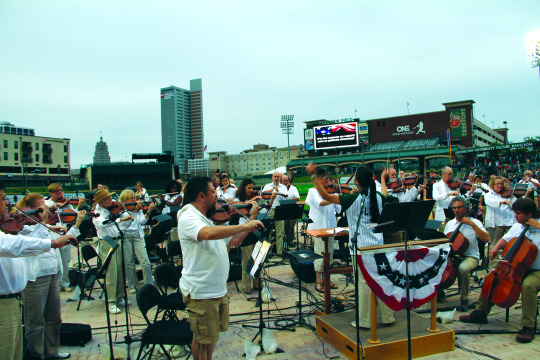
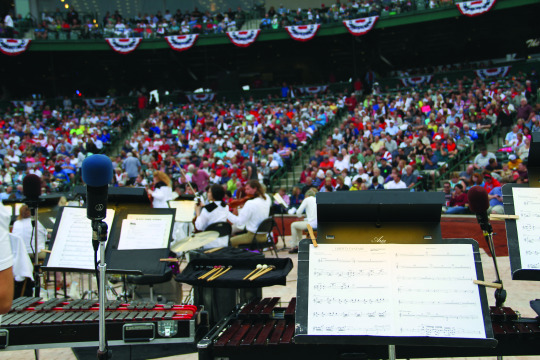
It’s also important to take note of all of the physical assets and the community events that contribute to local culture. Asset mapping helps to draw connection points between people, places, and events. There’s no formula for this kind of mapping because every community is different. More to come on resources for asset mapping, but here are some places to begin:
Asset Mapping Resources:
NEA Asset Mapping Resources
Community Partnership for Arts and Culture
The Creative Community Builder’s Handbook
So, how does Creative Placemaking fit in to all of this? Read more in our Creative Placemaking online toolkit!
The Fort Wayne Philharmonic (FWPhil) is an Indiana Arts Commission, Arts Organization Support grant recipient. The photos above were provided by the FWPhil and are of the Philharmonic’s Pops Concert at Parkview Field.
0 notes
Text
Stockert meets Stratton-Porter
Gene Stratton-Porter
Author Naturalist Photographer Producer

Gene was not like most women of her time. Instead of staying home and sewing or cooking, Gene preferred to go exploring in the Limberlost Swamp. There, using a camera given to her as a Christmas present by her daughter, she photographed the colorful birds and animals in their natural habitat. When she set out to explore the swamp, she carried with her the camera and a gun, just in case any poisonous snakes crossed her path. Gene submitted her nature photographs and articles to outdoor magazines, such as Recreation and Outing.
Soon, Gene decided to try writing fiction as a way to appeal to a larger audience. Her first novel, Song of the Cardinal, was published in 1903, and a second, Freckles, came out in 1904. In all, Gene authored 12 novels, seven nature books, two books of poetry, children’s books and numerous magazine articles. Though her novels were wildly popular, many critics complained that they were overly sentimental and romantic. Indiana History Society
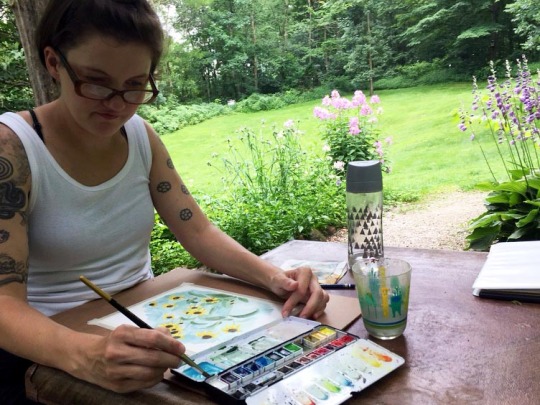
We met up with Rebecca Stockert three days into her two week residency at the Gene Stratton-Porter State Historic Site and it didn’t take long for us to understand why Rebecca was drawn to Gene.
Rebecca is probably best known for her whimsical illustrations featuring animals and nature–two subjects that were incredibly influential to Gene as well. Rebecca explained that she used to visit the historic site as a child and when she saw the Arts in the Parks and Historic Sites grant program opportunity she knew it was time to revisit Gene and the life she created in Rome City.
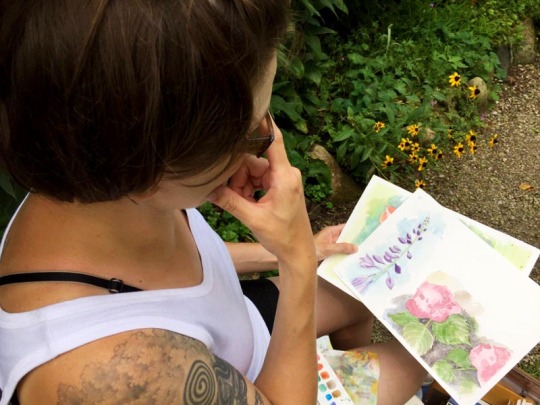
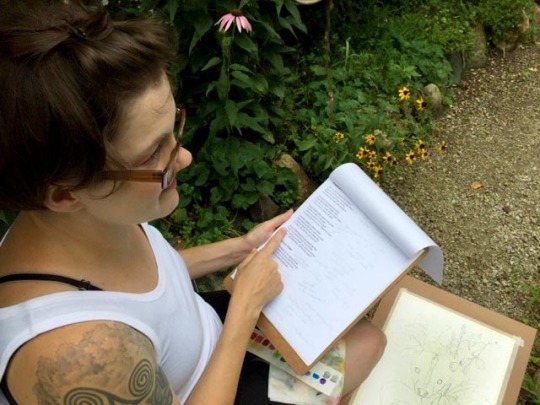
During the course of her two week residency, Rebecca is illustrating 10 different plant species native to the area. In between the technical plant studies she is calling upon Gene’s poetry and discovering inspiration for new narrative illustrations. When she hits a creative road block Rebecca looks back to Gene and her poems for guidance saying,
Poetry is complex. You always get something new out of it that you missed the first time.
Added bonus is the expertise of State Historic Site manager Dave Fox (pictured with Rebecca below). Dave has been with the Gene Stratton-Porter Site for 9 years. His passion is authentic and genuine. If you find yourself in Rome City be sure to mark this spot on your calendar! Rebecca held a watercolor workshop over the weekend and will be there for the remainder of the week (July 17-22). Stop in and catch up–she’ll spot you a paintbrush (and good company)!
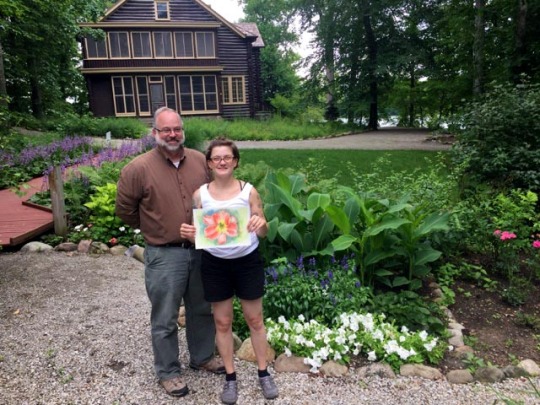

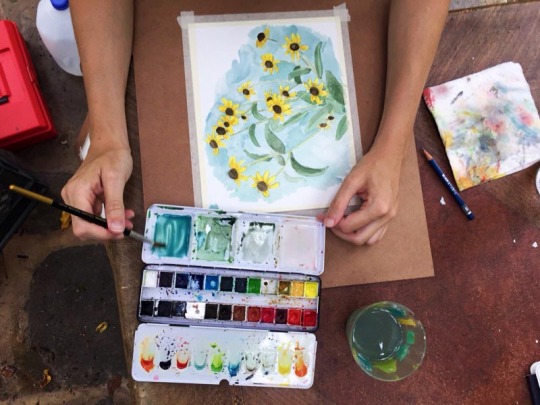
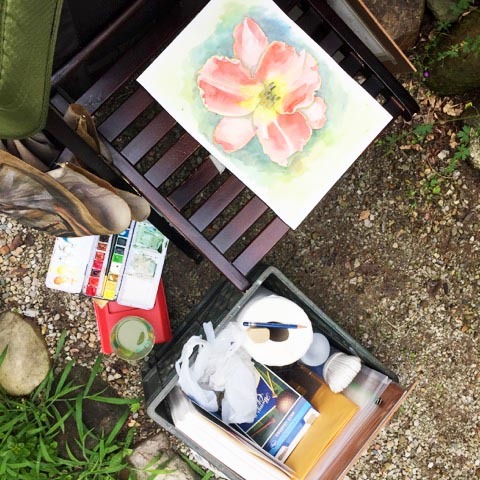
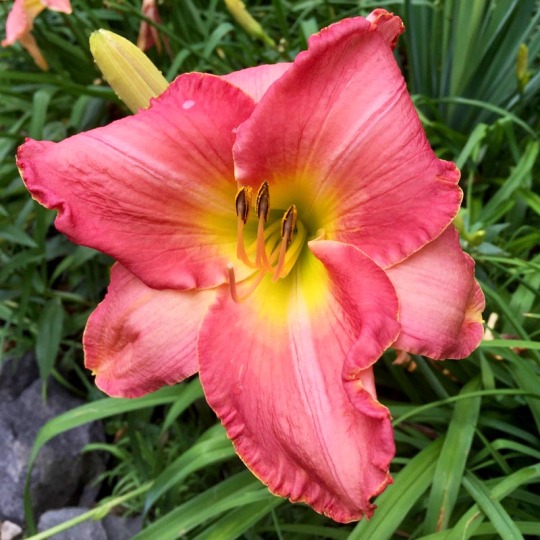
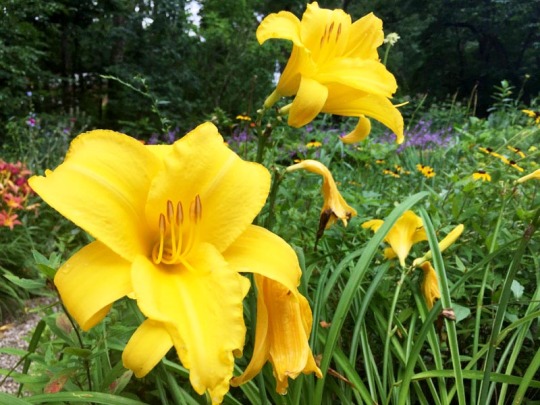
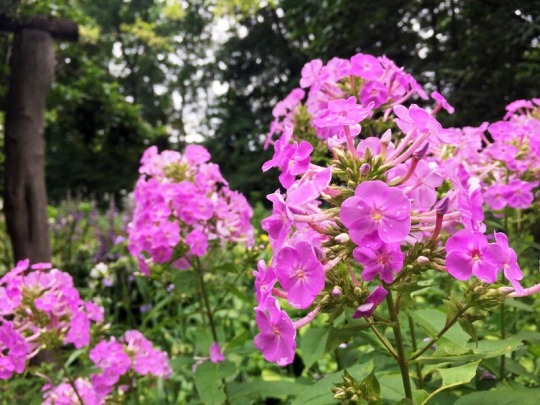
0 notes
Quote
I was doing assessments and asked a first grader to name an artist. She said 'Monet'.
Jo Anne Fiscus, teaching artist, Indiana State University, PACE Program

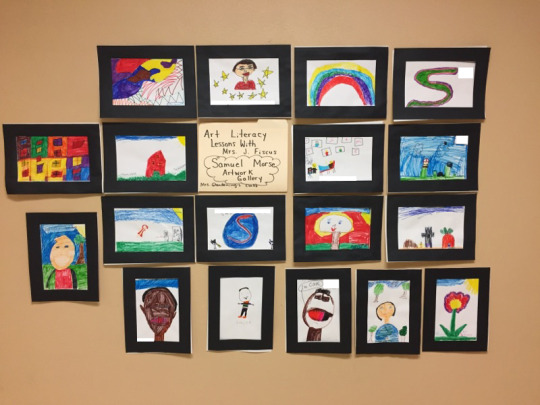


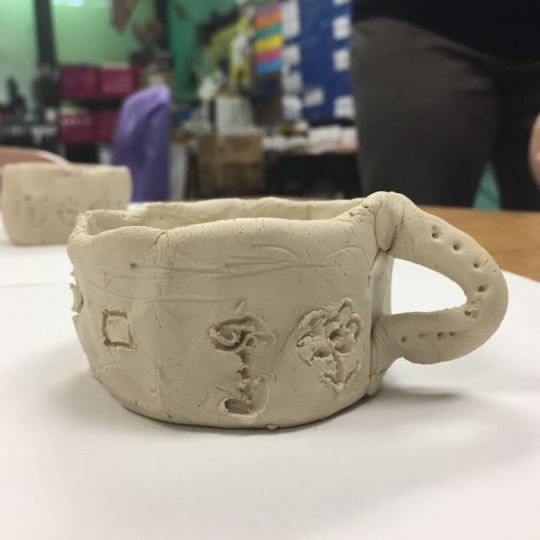
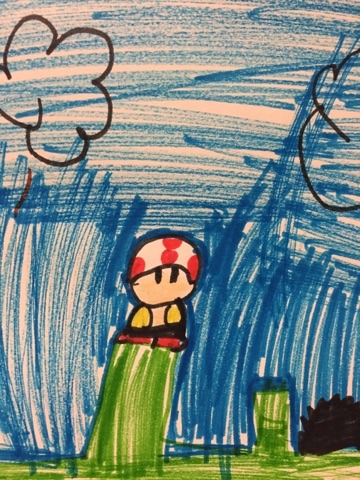
0 notes
Text
We love Bristol!
Last Friday was the Region 2 Grant Reception at the Elkhart Civic Theatre and we had a BLAST! We met Whitney from ADEC and learned all about artist Charlie Long and his love for bicycles.

Insider tip: the Art by ADEC store is so cool. Seriously. Stop by if you’re ever in the area. We picked up one of Charlie’s bike shirts!
After we finished checking out at ADEC we headed on over to the Elkhart Civic Theatre. We hung out with The Community Foundation of St. Joseph County’s Angela and Kayla, met Shelley from the Heartland Gallery, and then we all previewed the Civic Theatre’s production of Agatha Christie’s Go Back for Murder.
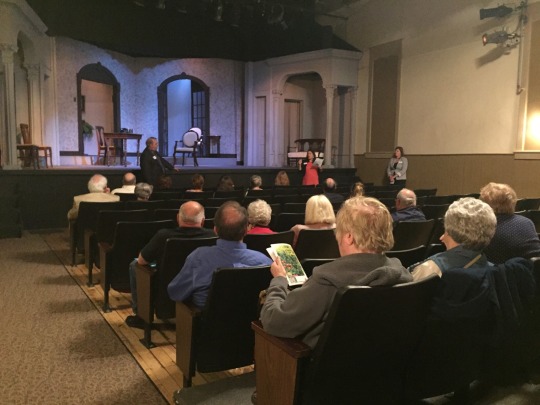
Insider tip: There’s not a bad seat in the house!
The show runs until April 30 and we totally recommend it!
Thanks for making us feel like part of your community Bristol, IN!
0 notes
Photo
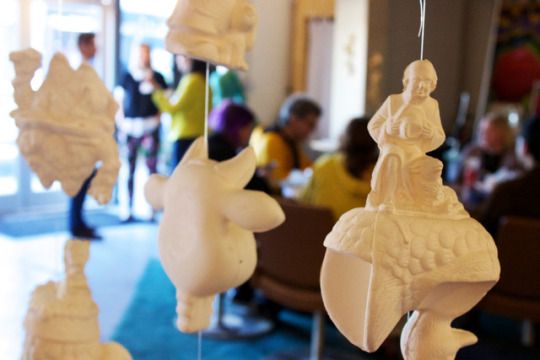
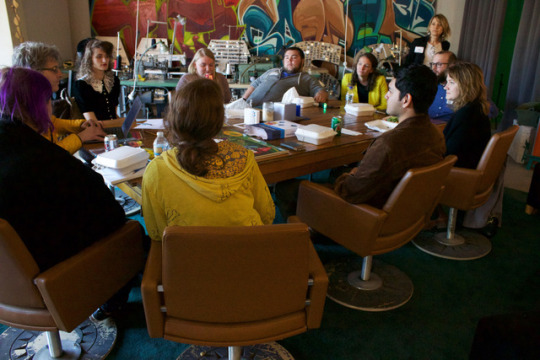
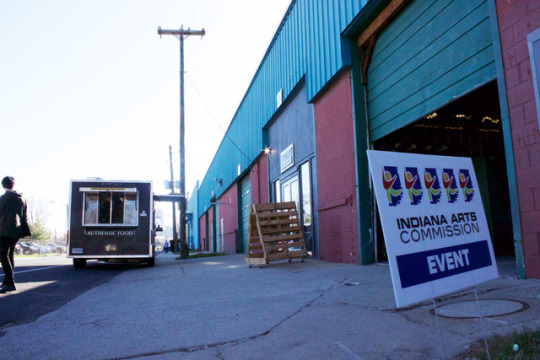
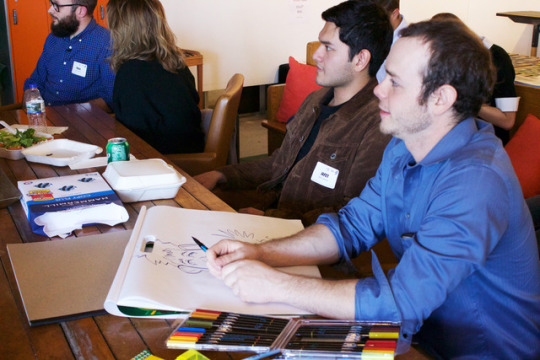
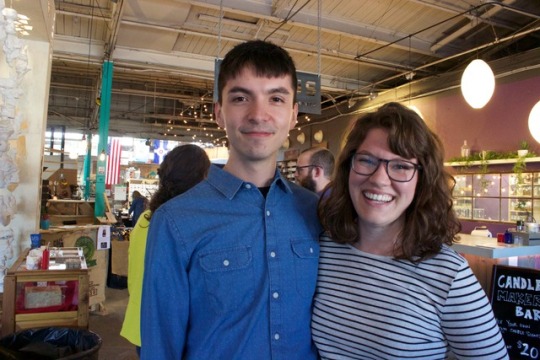


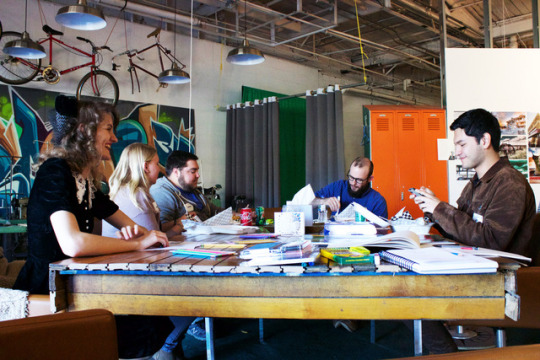
Love it when a plan comes together! The Emerging Artists Roundtable at Ruckus last Friday was great. We learned A LOT about what emerging talent need/want in our state and are busy in the office debriefing and thinking through how we can bring their ideas to life.
0 notes
Photo
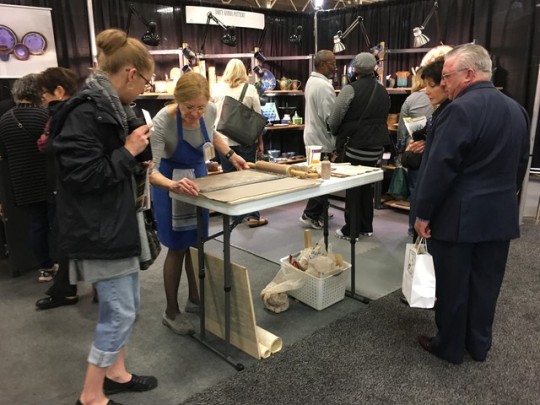

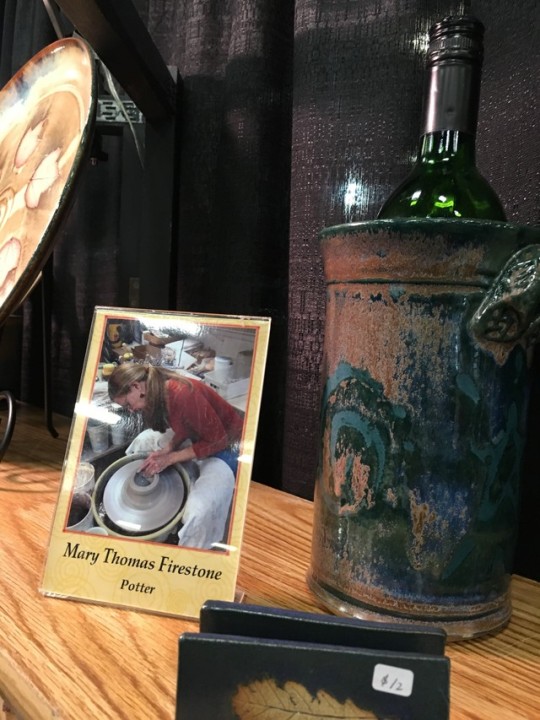
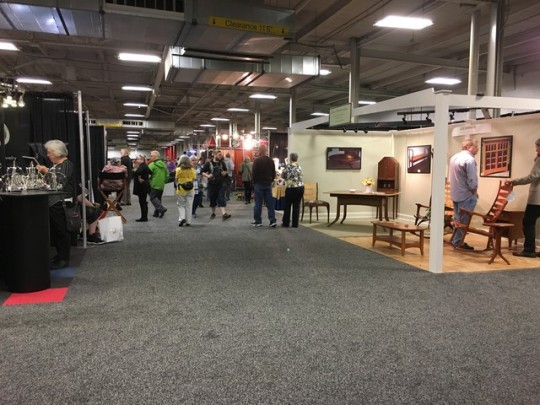
The Indiana Artisan Marketplace this weekend was insanely inspiring! So happy we could go.
0 notes
Photo
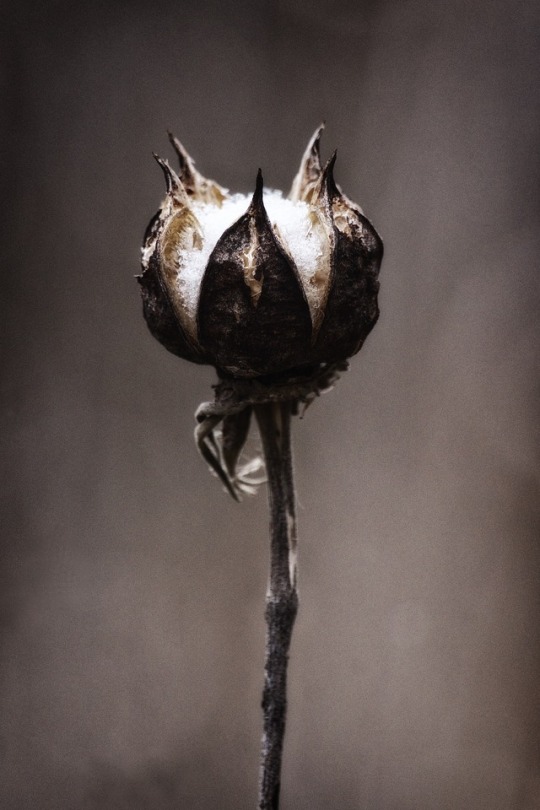
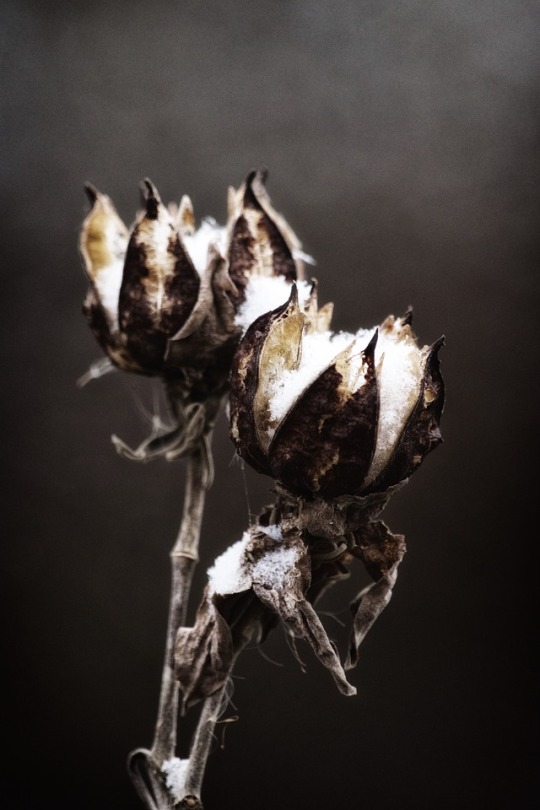

Nature portraits of snow-capped vegetation at Fort Benjamin Harrison State Park in Indianapolis during March 2017.
Sine Qua Non Photography: images by Nathanael Handlang
Flickr - Facebook - Instagram
88 notes
·
View notes
Photo
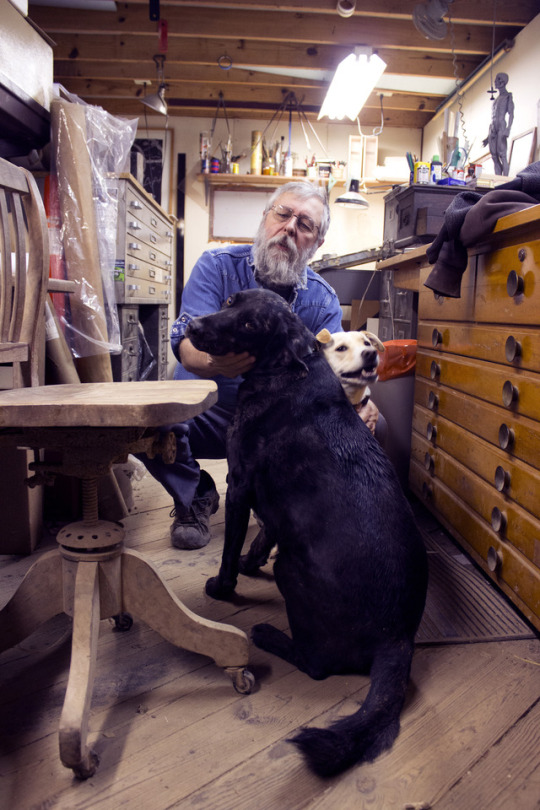
The man, the myth, the legend: Dale Enochs
0 notes
Photo
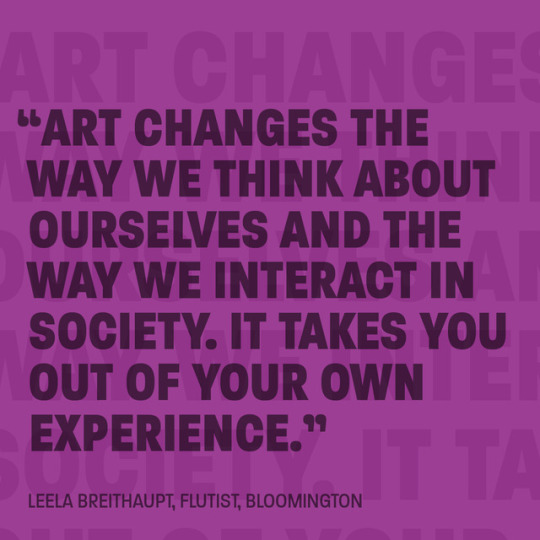
Baltimore > Berlin > Baltimore > Bloomington
Flutist Leela Breithaupt is a very busy woman these days. We were lucky enough to take a few moments of her time and the following, in her own words, is what we learned.
About the Grant
I just played at Carnegie Hall for the first time ever. The old adage, “How do you get to Carnegie Hall? Practice!” is only part of it. You also need to have connections and savvy entrepreneurship skills. For me, it all started with the 2015 Individual Artist Grant. Since then, musical opportunities have just kind of snowballed.
I used to be very shy about talking to people about what I do. I came to Indiana as a 24-year-old. I was about student age, but I had three music degrees and was done studying. It was really difficult for me to reach out to people not having an affiliation. Receiving support from the IAC made me feel legitimate in some way. After that, I didn’t question whether I could contact somebody and say, “Hey, I have this idea - how can we make this happen?”
One of the questions in the grant application is: how is this going to impact your career? I had to think about what the grant could actually do for my career and what I wanted it to do for my career? Through writing the grant, I had to ask myself hard questions like, how do I want to grow? What is the future that I’m envisioning for myself? Just the act of thinking about that and planning for it to become a reality really created opportunities that I wasn’t aware of before.
About the Record Deal
When we were finished in the mixing studio, I asked my sound engineer, “Do you think I should send this to labels?”, and he said, “I don’t know why you wouldn’t - it’s really good.”
That was another thing I had no idea how to do. So, I contacted some colleagues and mentors and got introduced to the founder of Naxos Records. I sent him the master, and he said, “Great, we want it, but this isn’t the only one we want. We want more.” So, then we had a discussion of what kind of ideas might come next, and only when he was satisfied that there was enough ingenuity and commitment did he say, “Okay, let’s get this one released.”
So, in many ways, receiving support from the IAC Individual Artist grant has propelled my whole career forward on full throttle. It’s a thrilling and demanding ride, and I’m so grateful.
0 notes
Photo
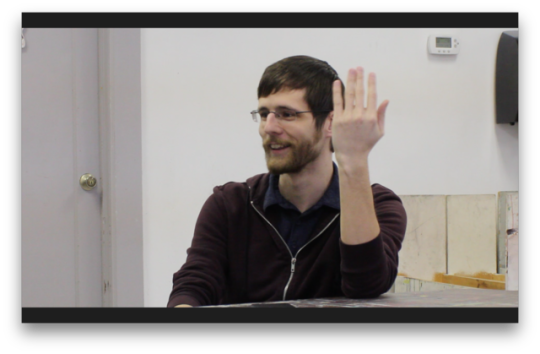
A few weeks ago we sat down with artist Drew Etienne. Read his blog describing his recent IAC Individual Artist Grant.
0 notes
